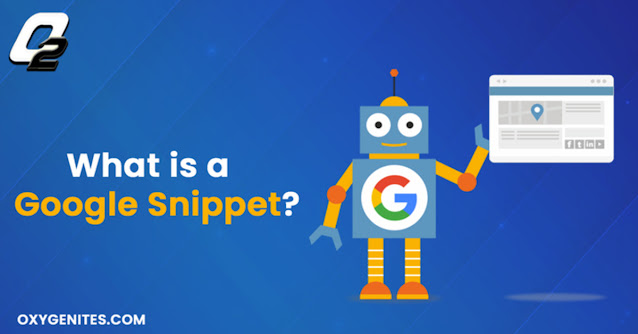Interestingly, the featured work and variations reveal some of the challenges Google has with these snippets. This is Google's comprehensive explanation to date. In short, featured snippets are the fast answers that you see at the top of the Google search engine results, which usually appear in reply to some search queries.
To illustrate the topic further, Google also explained what rich answers are. The different user interfaces and treatments users can receive from these content-rich direct answers from Google interact with the desktop, mobile, and voice search results. Further, rich answers are necessary for mobile search and for voice-activated digital assistants.
Variations of Google snippets
Google has always put a lot of thought into presenting organic listings on a search engine results page. They are constantly testing subtle changes to how they deliver such listings. Links and URLs displayed in search results have made very few changes over the years. However, variations of Google search snippets are frequently tested.
With these updates, Google also illustrates these regular listings in response to searches and featured snippets because these aren't meant as a solitary basis of information. These snippets are part of a broad set of results we offer, giving folks information from a wide choice of sources," Google added. But rich snippets in search can assist persons in finding what they're looking for, both from the description and when they tap the link to examine the page itself. It's useful for users of mobile devices and voice searches.
Know more about snippets
The fact that SEO experts share tips on how to increase the chances of becoming one of these respondents becomes evident shortly after. This is why they are sharing tips on increasing the chances of becoming an expert since they know that this is a traffic booster method.
So, where does Google get the snippet text?
There are three places where Google looks to find snippet text:
- From your meta description in the page code.
- The site's listing in the Open Directory Project (an authoritative web directory edited by humans).
- The text content of the page.
It is even possible that Google could take text from a combination of these sources, depending on other criteria in the Google algorithm.
Given a choice, we would rather have a say in what gets displayed in our snippets rather than leaving Google to decide. The case would be to have Google use your meta description as the snippet text since we have complete control over the contents of this text. But how can you influence Google to use your meta description instead of looking elsewhere for snippet text? Although there is no sure-fire way to make Google do anything, there are some things you can do to improve your chances:
Write unique, individual meta descriptions for each page of your site and well-researched, relevant keywords in your meta description. Use reports that are well-written and use your keywords yet still make sense to humans; make sure the rest of your page is accurately optimized to use your keywords enough to be helpful but not too much to be considered spamming. Don't use a long string of keywords or repeat content inside your tag.
Rich Snippets - Search Engine Benefits
Rich Snippets brings meaning to data contained in web pages in a way that the search engines can understand. This metadata helps the search engines recognize what the data is about and how it corresponds to other data. A name, for example, in HTML is just text without specific significance to a search engine such as Google. Using this RDFa and Microformat information, the search engine understands that the text is a name.
With time Google admits that there is a lot of work that needs a lot of improvement; thus, the tech giant has much more work to do and will improve these results over time.
A Google (or another search engine) snippet also provides a window for website owners/web admins to closely monitor how a Web crawler perceives their website and webpages. The information available in the snippet will display valuable data; including crawl and keyword frequency:
You will note that the Google snippet contains a cached page. This page displays the last time the website was crawled and the text on the page relevant to the query.
How can you find out which browsers most people are using on the web? Just visit StatCounter, and you will see that Chrome is the world's most popular browser, and thankfully Chrome embraces HTML5. The biggest problem is that many people still use earlier versions of Internet Explorer, and it does not support HTML5.
Modernizer is another useful site, which tells you what the user's web browser supports in HTML, CSS, and JavaScript. This website is a great way to check what features are supported by what browsers. We can't ignore the people with older browsers and find a way to accommodate them best while still adding cutting-edge features.
Furthermore, Google has highlighted (in bold print) the consumer's search words in the snippet. It is also very important to note that Google can apply synonyms to search results as well. For example, a search result for automobiles may also display cars; and vice-versa. This factor should also be strongly considered when selecting keywords, phrases, and descriptions; for your metadata content.



0 Comments